The NVIDIA GeForce RTX 2070 Super & RTX 2060 Super Review: Smaller Numbers, Bigger Performance
by Ryan Smith on July 2, 2019 9:00 AM EST- Posted in
- GPUs
- GeForce
- NVIDIA
- Turing
- GeForce RTX
Meet the GeForce RTX 2070 Super & RTX 2060 Super
Taking a closer look at the RTX 2070 Super & RTX 2060 Super Founders Edition cards, there aren’t too many surprises to be found. Since we’re dealing with a mid-generation kicker here, NVIDIA has opted to stick with their original RTX 20 series reference designs for the new cards, rather than design wholly new boards. This has allowed them to get the new cards out relatively quickly, and to be honest there’s not a whole lot NVIDIA could do here that wouldn’t be superficial. As a result, the RTX 2070 Super and RTX 2060 Super are more or less identical to the RTX 2080 and RTX 2060 respectively.
| GeForce RTX 20 Series Card Compariaon | ||||||
| RTX 2070 Super Founders Edition |
RTX 2070 Super (Reference Specs) |
RTX 2060 Super Founders Edition |
RTX 2060 Super (Reference Specs) |
|||
| Base Clock | 1605MHz | 1605MHz | 1470MHz | 1470MHz | ||
| Boost Clock | 1770MHz | 1770MHz | 1650MHz | 1650MHz | ||
| Memory Clock | 14Gbps GDDR6 | 14Gbps GDDR6 | 14Gbps GDDR6 | 14Gbps GDDR6 | ||
| VRAM | 8GB | 8GB | 8GB | 8GB | ||
| TDP | 215W | 215W | 175W | 175W | ||
| Length | 10.5-inches | N/A | 9.0-inches | N/A | ||
| Width | Dual Slot | N/A | Dual Slot | N/A | ||
| Cooler Type | Open Air (2x Axial Fans) |
N/A | Open Air (2x Axial Fans) |
N/A | ||
| Price | $499 | $499 | $399 | $399 | ||
As I noted earlier, the Founders Edition cards themselves are now purely reference cards. NVIDIA isn’t doing factory overclocks this time around – the high reference clock speeds making that process a bit harder – so these cards are very straightforward examples of what the RTX 2070 Super and RTX 2060 Super can deliver in terms of performance. It also means that these cards no longer carry a price premium, with NVIDIA selling them at the $499 and $399 MSRPs respectively.
Starting with the RTX 2070 Super then, possibly the only material change is quite literally in the materials. NVIDIA has taken the 2080 reference design and given the center segment of shroud a reflective coating. This, along with the Super branding, are the only two visually distinctive changes from the RTX 2080 reference design. For better or worse, the reflective section is every bit the fingerprint magnet that you probably expect, so thankfully most people aren’t handling their video cards as much as hardware reviewers are.
In terms of cooling then, this means the RTX 2070 Super gets the RTX 2080’s cooler as well. At a high level this is a dual axial open air cooler, with NVIDIA sticking to this design after first introducing it last year. The open air cooler helps NVIDIA keep their load noise levels down, though idle noise levels on all of the RTX 20 series reference cards has been mediocre, and the new Super cards are no different. The fact that this reference design isn’t a blower means that the RTX 2070 Super isn’t fully self-exhausting, relying on the computer chassis itself to help move hot air away from the card. For most builders this isn’t an issue, but if you’re building a compact system or a system with limited airflow, you’ll want to make sure your system can handle the heat from a 215W video card.
Under the hood, the RTX 2070 Super inherits the RTX 2080’s heatsink design, with a large aluminum heatsink running the full length of the card. Deeper still, the heatsink is connected to the TU104 GPU with a vapor chamber, to help move heat away from the GPU more efficiently. Overall the RTX 2070 Super has the same 215W TDP as the RTX 2080, so it behaves virtually identically to the latter card. Which is to say that it has no problem keeping its cool.
Since this card is needed for further testing I haven’t shucked the card down to its PCB, but according to NVIDIA the power delivery system is also identical to the RTX 2080. In this respective NVIDIA’s reference designs are solid, and while they won’t be enough for hardcore overclockers, it’s more than sufficient for the kind of overclocking that can be done with the reference cooler. Of particular note, the maximum power target for the card is +20%, which means it can have its TDP increased to 258W. Accordingly, the card is fed by the same 6pin + 8pin power system as on the RTX 2080, more than guaranteeing the card can be fed up to its power target limit.
Finally, for display I/O, the card gets the continuing NVIDIA high-end standard of 3x DisplayPort 1.4, 1x HDMI 2.0b, and 1x VirtualLink port (DP video + USB data + 30W USB power).
GeForce RTX 2060 Super
Shifting gears, for building the RTX 2060 Super NVIDIA has gone the opposite direction, using the RTX 2060 reference design as the base. The 2060 itself wasn’t all that different from the 2080 – and the same holds for its Super variant – but there are a few notable distinctions from the newly minted RTX 2070 Super.
In terms of overall design, the RTX 2060 Super Founders Edition card retains the same design aesthetic – reflective bits and all – but it comes in a smaller package. Overall the card is just 9 inches long, which is 1.5 inches shorter than the RTX 2070 Super. The cooling system has also been simplified a bit – mostly forgoing the vapor chamber – though it still retains the card’s full-body heatsink and dual fan open air cooler.
With a 175W TDP, the card relies on a single 8pin PCIe power connection at the rear of the card for the extra power it needs. Overclockers meanwhile will be able to pump up the power target by 22%, allowing the card’s TDP to be raised to a maximum of 213W.
Outside of its smaller stature, the other big departure for the RTX 2060 Super from its more powerful sibling is in the display I/O configuration. As with the regular RTX 2060, the Super card drops the 3rd DisplayPort for a DL-DVI-D port, giving the card a final tally of 2x DisplayPort 1.4, 1x HDMI 2.0b, 1x DL-DVI-D, and a sole VirtualLink port.


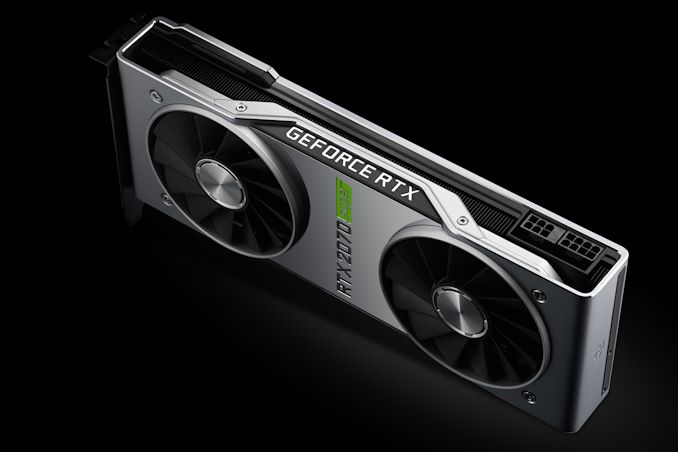
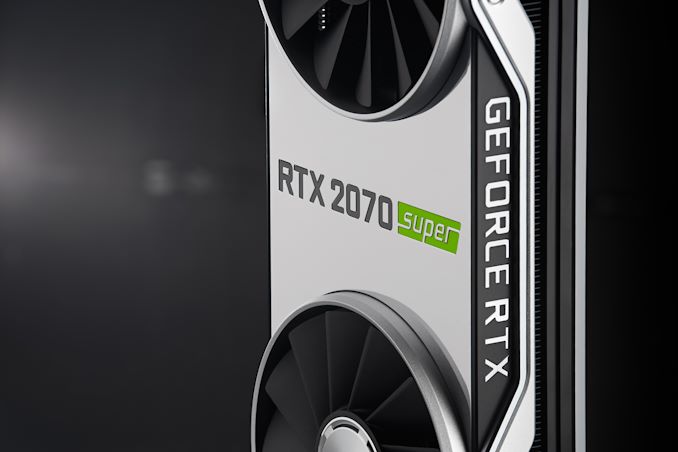
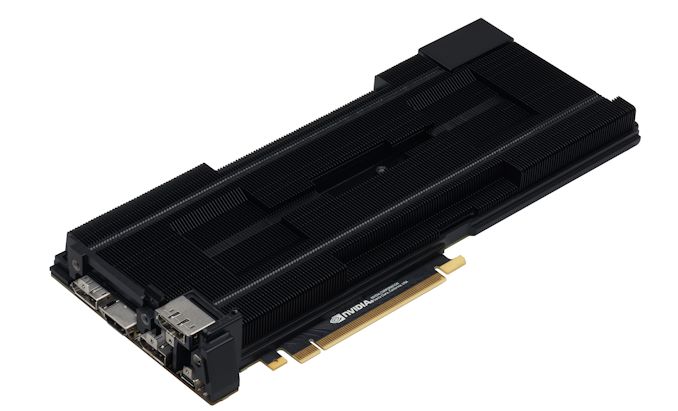

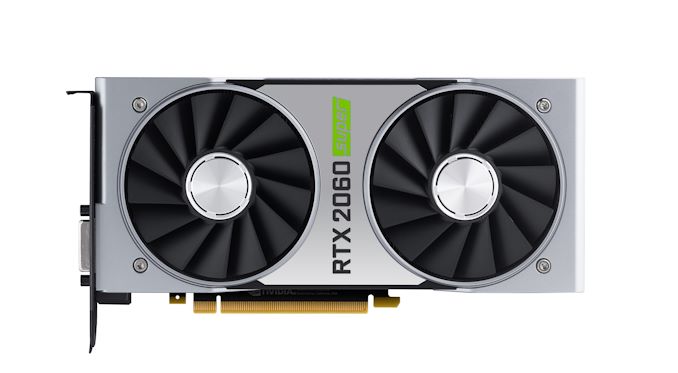
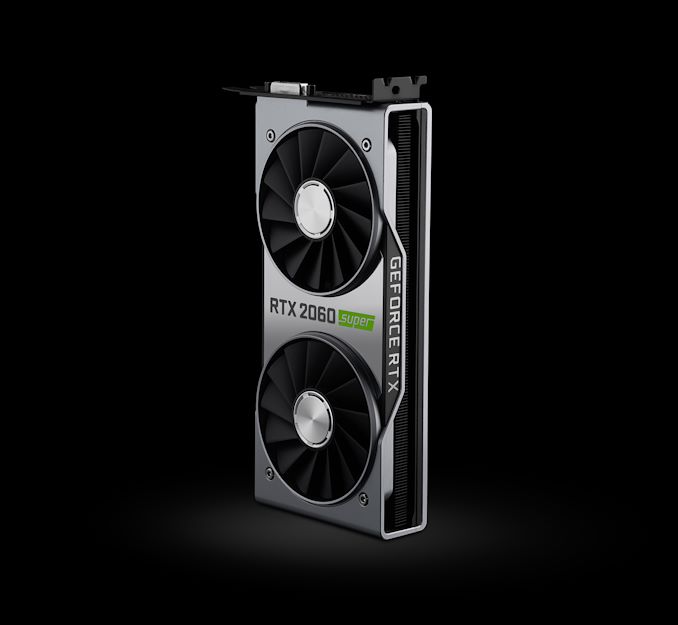









281 Comments
View All Comments
Kevin G - Tuesday, July 2, 2019 - link
I'd be foolish to jump on any of these cards right now until after the RX 5700 reviews hit. But saying that, the RTX 2060 Super does look to be one very attractive card now. The rest of the line up feels like this is where nVidia should have originally positioned the RTX line up nearly a year ago as it would have given Pascal owners more of a reason to upgrade.This does make me wonder how much longer until nVidia will have their 7 nm chips ready. If they were due at the end of the year, why not just do a small price cut if the Radeon RX line up is competitive and wait it out? If nVidia's 7 nm chips are further out, this refresh makes far more sense but has me scratching my head as to what nVidia's hold up could be. If those 7 nm chips arrive in 2020, then AMD will have had 7 nm products out on the market (though for data centers) for a full year ahead of nVidia which again seems to be weird.
sing_electric - Tuesday, July 2, 2019 - link
To be fair, you can't get the Nvidia Super cards until 7/9, after AMD's cards are out.When Nvidia launched the RTX series, I thought that they had to be pretty confident in their design to be doing it on 12nm. They probably got great yields from day 1, and I'm really surprised that they weren't able to meet demand from the time they launched.
Peter2k - Tuesday, July 2, 2019 - link
Probably the sheer size of the chips itself, thx to the RTX partsWould've been interesting to see a GTX 2080
Yojimbo - Tuesday, July 2, 2019 - link
The 12FFN process is mature and the yields are good, but the RTX cards have large die sizes because of the features they have. I think prices do tend to go down even 2 or 3 years after a node comes out. Also, I'm willing to bet that GDDR6 prices are lower now than 9 months ago.I'm pretty sure NVIDIA won't be shipping any 7 nm parts in an significant volume until the second half of 2020. At that time NVIDIA needs to deliver its next generation data center GPU for the Perlmutter supercomputer. I guess they will also launch gaming GPUs because September or October of 2020 would be around the right time for it.
As far as NVIDIA's hold up, perhaps it's the current cost of the 7 nm node. AMD has no choice but to go to 7 nm. They need the power efficiency that the new node offers and they are probably willing to pay more per transistor to get it. NVIDIA doesn't need the power efficiency at the moment, so they are more willing to keep their costs down.
V900 - Tuesday, July 2, 2019 - link
Nvidia just taped out their first 7nm design, so we can expect it in about a year. :)It’ll be interesting to see how much they’ll be able to get out of the double whammy of new architecture and new node.
And AFAIK they’ll use a denser 7nm node than AMD.
Meteor2 - Saturday, July 6, 2019 - link
I quite agree, Yojimbo. 7nm or any other process step is a means to an ends, not an end in itself. Nvidia just don't need it; AMD do.Gastec - Wednesday, July 17, 2019 - link
GDDR6 prices would be lower unless there's a "power outage" every year in July.V900 - Tuesday, July 2, 2019 - link
They just taped out their first 7nm design, so it’s about a year away. :)Korguz - Tuesday, July 2, 2019 - link
oh ??? says who ??V900 - Tuesday, July 2, 2019 - link
Reliable source. Can’t remember his name rn, but one of those industry insider honchos on Twitter.Read it over on Beyond3D forum.